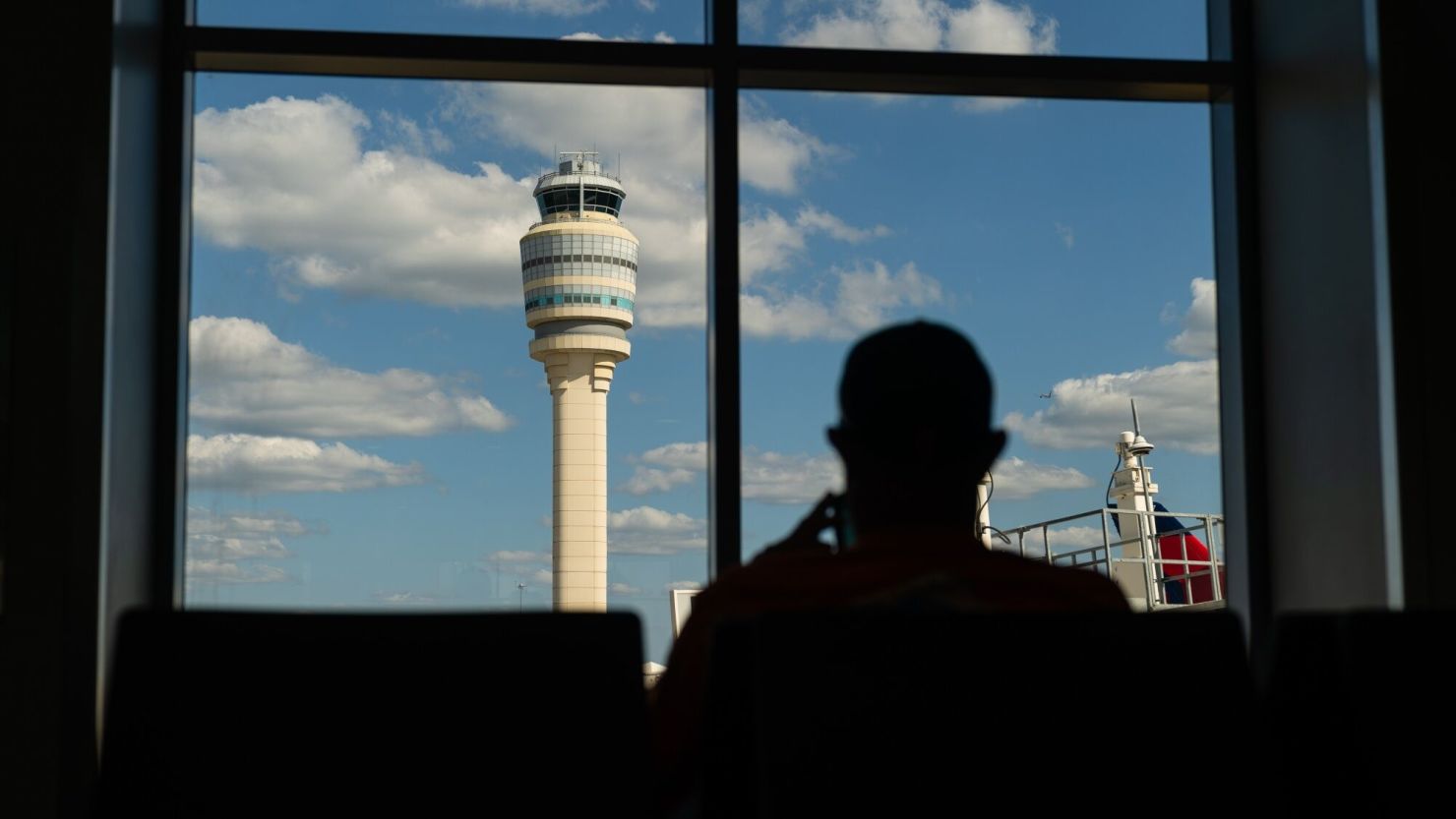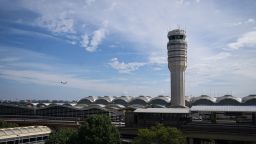The Federal Aviation Administration has announced scheduling changes in response to an expert panel that is recommending air traffic controllers have more stable work schedules and consistent time off to reduce fatigue.
The panel was established after a string of near collisions on US runways.
FAA Administrator Mike Whitaker announced Friday he would require a minimum of 10 hours off between controller shifts, and 12 hours before a controller works a midnight shift.
Under current work rules, controllers can be scheduled for duty as little as eight hours after the end of a previous shift.
It comes as the agency is attempting to boost its significantly understaffed workforce, which has been working extensive overtime – including six-day weeks – to fill shift gaps in towers and centers across the country.
The scheduling change has emerged after two passenger jets came within about 400 feet of colliding on Thursday when controllers sent the two planes to the same runway at Reagan National Airport. It was one of numerous near misses in the last year.
During Friday’s briefing with Whitaker, the FAA did not take a question from reporters about what caused the incident at Reagan and whether controller fatigue played a role.
The National Air Traffic Controllers Association called fatigue a “serious issue,” but said the FAA’s proposed changes could actually force controllers to absorb further on-the-job exhaustion.
“NATCA is concerned that with an already understaffed controller workforce, immediate application of the Administrator’s new rules may lead to coverage holes in air traffic facilities’ schedules,” the labor union said in a statement. “Requiring controllers to work mandatory overtime to fill those holes would increase fatigue and make the new policy nothing more than window dressing.”
The union said scheduling agreements for this year were negotiated late last year, and rapid changes could “disrupt the lives of controllers.”
The panel called for eliminating a classic air traffic controller schedule known as “the rattler.” It entails controllers working five shifts – two afternoon to evening shifts, two mornings, and one overnight – in four days. In this model, controllers then have 80 hours off before starting again.
The rattler may be the schedule for seven out of 10 current controllers, panel chairman Mark Rosekind told reporters. Researchers have studied the impact of this scheduling pattern for two or three decades, he said.
The panel did not propose a replacement scheduling model but gave the FAA nearly 60 items to work on, including setting the minimum rest times between shifts, surveying employees on their preferred scheduling patterns, and increasing air traffic controller staffing.
Rosekind encouraged the FAA to look at both schedules and the hours controllers actually work, “because very often there can be a discrepancy between what is planned and what is actually worked.”
The report noted that “fatigue risk factors related to overtime, consecutive days or weeks worked, and mechanisms to address variable traffic/workload scenarios could be improved or potentially eliminated with appropriately increased staffing levels.”
The FAA’s most recent figures – released last May – showed the agency is 3,600 controllers short of its staffing goal. In November, the air traffic controllers’ union chief told Congress that after subtracting employee losses including retirements, the agency netted an increase of only six controllers in the last year. The agency’s latest budget proposal calls for increasing the hiring capacity from a limit of 1,800 to 2,000 annually.
The new report said sleep logs kept by some controllers showed some workers sleeping less than two and a half hours between ending a day shift and starting an overnight shift on the same calendar day.
Whitaker said the 10- or 12-hour window between shifts would be implemented within 90 days. He also said overtime shifts would continue to be a part of controllers’ schedules while the agency works to increase the number of controllers on its payroll.
One 2001 study of air traffic controllers cited in the report presented startling statistics: Controllers linked half of their on-the-job mistakes to fatigue, mostly due to their work schedules. More than three-quarters of controllers surveyed “caught themselves about to doze off while at work.”
And one-third of controllers said they had fallen asleep while driving, most commonly after the midnight shift that caps off the rattler series of shifts.
The Scientific Expert Panel on Air Traffic Controller Safety, Work Hours, and Health included three experts and was led by a former National Transportation Safety Board member.






